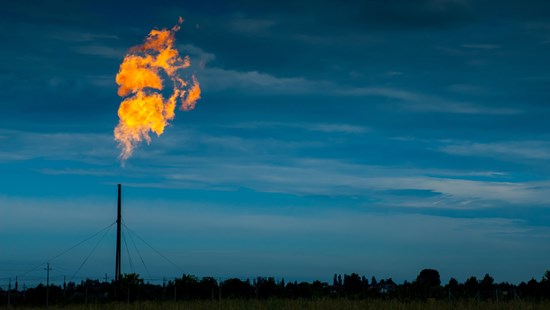
Samantha Dovey, head of fund research at Ravenscroft
With climate change already devastating so many lives, we cannot purely rely on solving this problem in the distant future, or by 2050. We need to slow down global warming as fast as possible, so that we minimise any future damage. After all, this is the “decade of action”.
Did you know that 99% of pollution is carbon dioxide (CO2), with the remaining 1% being methane? Given the pressure the planet and people are currently under, we know we need to reduce these amounts, and soon.
Methane could cause more warming over the next 10 years than all the CO2 put together. This is due to its molecular structure and ability to form other greenhouse gases in the atmosphere, which means it absorbs a lot more energy per unit (I get lost in the deep physics to be honest).
The 1% of methane in our atmosphere has the potential to cause more warming than all that CO2 in the next several years, but it only lasts in the atmosphere for around a decade. Methane's warming power is therefore not from the gradual build-up over time like CO2, but almost entirely from recent emissions.
This means that every time we reduce methane, we can reduce a lot of warming right away – winning!
CO2, on the other hand, lingers in the atmosphere long after it is emitted, which means we must achieve net-zero emissions to eventually stabilize our climate. This is key for protecting generations to come.
In fact, cutting methane is the single fastest and most effective opportunity to immediately slow down the rate of warming.
The methane we emit comes from three main sources:
- Energy production – This is the largest and cheapest opportunity we have to cut methane today. Most methane from energy isn't from burning fossil fuels, it's from producing them. Natural gas is mostly methane, which can easily escape into the atmosphere when extracting oil, gas and coal, or when transporting gas through pipelines. In fact, these leaks can completely offset any near-term climate benefits of using gas instead of coal. On the upside we have the technologies to cut the majority of these emissions by around half for no net cost because the saved gas can be sold. Fixing the methane problem, though, could be as simple as tightening a valve or placing a gasket or tuning an engine. A major reason why these easy fixes haven't been implemented isn't the cost, it's because governments and industry have been data-deprived, lacking information on where and how much is emitted. Fortunately, our ability to detect these leaks has rapidly advanced in recent years, with everything from handheld instruments to sensors on aircrafts and drones.
- Waste management - Methane is produced as bacteria decompose, rubbish sits in landfills and sludge forms in wastewater. Some of the largest landfills receive enough rubbish per day to fill more than 10 Olympic-sized swimming pools before it is compacted. With the technology available today, we can now literally vacuum up the methane and then use it to generate electricity. We can also reduce emissions by sending waste such as food away from landfills and compost it instead in buildings that are designed to prevent the release of methane.
- Agriculture – This emits the most methane and remains the hardest to address, with the number one source being livestock. Cows belch methane that they produce when digesting grass. Reducing these emissions is possible with higher-quality feed and scientists are developing and testing new technologies, like feed supplements, that can suppress methane production in a cow's gut by at least 30%with no negative effects on productivity or quality – this made me think of feeding cows big bottles of probiotics!
Implementing these solutions will take work, but people have already started to act. Many governments, oil and gas CEOs, landfill operators and farmers are advancing measures to reduce methane. But we need more, because there is a lot of warming that could still be prevented if we quickly deploy the full set of affordable and available strategies.
If we succeed in a rapid, full-scale effort to cut methane, we have a chance to experience the benefits sooner, perhaps even in our lifetimes. This would help communities and ecosystems adapt to a changing climate and hit the brakes on worsening extreme events, like wildfires in the Americas and Australia, and flooding in Europe and Asia.
This is the methane moment, as cutting methane is the single fastest, most effective opportunity to reduce climate change risks in the near-term. This is why more than 100 countries at COP26 signed up to The Global Methane Pledge, which aims to reduce methane emissions by 30% compared to 2020 levels.

